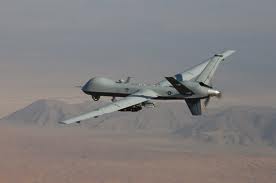I’ve often thought of my Grandfather and the changes he saw in his 95 years. Once he plowed fields with a mule (~1 HP) , but switched to plowing with a turbocharged International Harvester tractor (~300 HP) in his later years. As a young man on a farm in Alabama he got the news of what happened last week by horseback, but in his later years he got the news as it happened from the television. He even went from watching the man in the moon from the back porch to watching a man walk on the moon. At the turn of the century he saddled his horse and rode four hours to town and just before he died , he hopped on a plane and was in Las Vegas in four hours. And he saw the horse-drawn wagon turned into a horseless carriage. I suspect he wondered what possible benefit could come from getting rid of the reliable horse and replacing the Old Grey Mare with an unreliable, noisy and complicated gasoline engine. In fact, I bet he would still saddle his horse to go to town, even when he could have taken the Ford and I’m sure he wasn’t the only one.  As I was looking at an MQ-9 Reaper, Remotely Piloted Aircraft (RPA) doing touch-and-go’s at Creech AFB near Las Vegas this morning, I thought once again about my grandfather and the parallels in our lives. I’ve gone from giving the Operator the phone number to having my iPhone give me the number. I’ve moved up from the Atari 800 (with the 32K memory module) to the MacBook Air….heck, I even have a three terabyte server sitting in my basement (at significantly less cost than the 32K Atari I might add). My fleet airplane, the A-6 Intruder, had a computer with a memory made up of 32,000 little round ceramic magnets woven together, operating at a speed of 8 Hertz (32 Hertz in Attack). Watching the JSF flying this morning I can’t even imagine how much memory it has, although I suspect it’s in the Giga’s. And my guess is the speed of its computer is in the Giga range as well. Wow!
As I was looking at an MQ-9 Reaper, Remotely Piloted Aircraft (RPA) doing touch-and-go’s at Creech AFB near Las Vegas this morning, I thought once again about my grandfather and the parallels in our lives. I’ve gone from giving the Operator the phone number to having my iPhone give me the number. I’ve moved up from the Atari 800 (with the 32K memory module) to the MacBook Air….heck, I even have a three terabyte server sitting in my basement (at significantly less cost than the 32K Atari I might add). My fleet airplane, the A-6 Intruder, had a computer with a memory made up of 32,000 little round ceramic magnets woven together, operating at a speed of 8 Hertz (32 Hertz in Attack). Watching the JSF flying this morning I can’t even imagine how much memory it has, although I suspect it’s in the Giga’s. And my guess is the speed of its computer is in the Giga range as well. Wow!
So think about the early attempts to field a pilotless airplane or what was called a drone.  I remember the Navy’s attempt at pilotless aircraft as a midshipman looking at the DASH helicopter operating from the deck of a destroyer. You never see them in museums because they all were last seen flying over the horizon, never to return. We made several other attempts before arriving with Fire Scout. We are now on the dawn of deploying a fixed-wing,
I remember the Navy’s attempt at pilotless aircraft as a midshipman looking at the DASH helicopter operating from the deck of a destroyer. You never see them in museums because they all were last seen flying over the horizon, never to return. We made several other attempts before arriving with Fire Scout. We are now on the dawn of deploying a fixed-wing,  pilotless, tactical aircraft on aircraft carriers with the X-47B and long-range Global Hawks operating from our Naval Air Stations. The Air Force is conducting routine combat patrols with MQ-1 Predator and MQ-9 Raptors and contributing to our war efforts in Afghanistan daily. The Air Force pilots who remotely fly these aircraft are quick to point out that they are not flying drones, but rather Remotely Piloted Aircraft. Just like at the turn of the century when people thought of automobiles as “horseless carriages.” Because of that narrow view they had no concept of what the automobile might become. I submit the same is true in the RPA world. Even now, I suspect that many of the “Old Salts” are questioning the value of a carrier-based RPA because they see it a merely an A-7 or A-4 flying around with no pilot inside. We have no idea how the addition of the X-47B to carrier air wings will change the way the Navy flies and fights. But the sooner we get out of the “horseless carriage” mindset and look at the X-47B not as an airplane without a pilot, but as a radically new way of projecting power, the better off we will be.
pilotless, tactical aircraft on aircraft carriers with the X-47B and long-range Global Hawks operating from our Naval Air Stations. The Air Force is conducting routine combat patrols with MQ-1 Predator and MQ-9 Raptors and contributing to our war efforts in Afghanistan daily. The Air Force pilots who remotely fly these aircraft are quick to point out that they are not flying drones, but rather Remotely Piloted Aircraft. Just like at the turn of the century when people thought of automobiles as “horseless carriages.” Because of that narrow view they had no concept of what the automobile might become. I submit the same is true in the RPA world. Even now, I suspect that many of the “Old Salts” are questioning the value of a carrier-based RPA because they see it a merely an A-7 or A-4 flying around with no pilot inside. We have no idea how the addition of the X-47B to carrier air wings will change the way the Navy flies and fights. But the sooner we get out of the “horseless carriage” mindset and look at the X-47B not as an airplane without a pilot, but as a radically new way of projecting power, the better off we will be.





 There has been a lot about leadership in the news lately (
There has been a lot about leadership in the news lately (